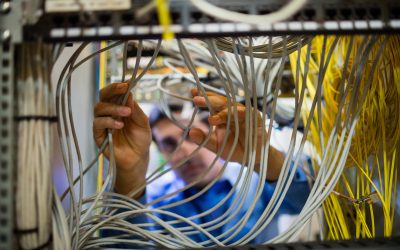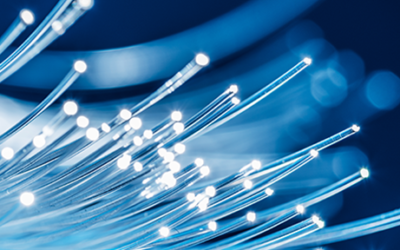Top considerations for optimizing your cabling implementation

Tags: design | infrastructure | installation | wired
In order to determine the best combination of twisted pair and/or fiber cabling to install, each customer must evaluate their application needs, considering the various advantages of each cable type and their relative importance. Cost, ease of installation, moves and arrangements, current and anticipated applications, and the expected life of the system are typically major decision factors. Environmental considerations such as electrical noise and clean rooms may also influence the decision, as well as building type, industry sector, and cabling system ownership.
The anticipated need for high speed applications, power over ethernet, multiple connections, and low initial cost might lead to a predominantly twisted pair cabling system. Higher speed application, extended distances, harsh environmental conditions, and graphics intensive multimedia applications might lead to a heavily fiber based system. Most systems will fall between these two extremes.
Given that there is some overlap in the customer base and capabilities for Category 5e, 6 and 6A cabling and multimode/singlemode fiber optic cabling system infrastructures, an understanding of the customer’s specific requirements is needed to recommend the optimal cabling solution. The decision will incorporate three phases – the definition of strategy, the design of the system, the cost effectiveness of the choice.
For the definition of strategy, within budget restraints, each customer must consider and prioritise the following:
- The sophistication of their network applications
- The kind of traffic expected on the various portions of the network based on number of users, data transfer requirements of each user, LAN architecture, etc.
- The life expectancy of the network and cabling infrastructure
- The frequency of moves and changes
- The growth potential of their network over its expected life
- Any adverse physical conditions in the customer’s LAN
The design and specification of the system should include the following:
- Outlet density and presentation required
- Resilience
- Patch/jumper density
- Wiring closet/space requirements
- Media selection – TP and /or fiber
- Media considerations – performance, physical hazards
- Manufacturers support and warranty
- Cable containment including wayleave requirements, containment types (trunking, ducts, cable tray), and containment design (size, safety, segregation)
- Installation techniques and quality
- Adherence to standards
- Labelling, records and documentation
- Testing and certification
- Maintenance and services.
When evaluating cost effectiveness, the customer should always think in terms of cost over the life of the cabling, rather than only the initial installation cost and also compare the cost to electronic hardware which will be replaced several time over the lifetime of the cabling. The lowest initial cost is not always the cheapest in the long run, however once the contract is placed it is difficult to change. Choose the right system first time. Considering cost effectiveness should include the following:
- Initial installation cost, ensuring it covers adequately the specification to avoid unwanted extras and performance restrictions
- Administration, the networks ability to be easily and inexpensively reconfigured
- Futureproofing, the ability to support ever increasing bandwidth and data rates in the future
- Maintenance, the effort required to keep the system operating
- Life cycle value, the assurance of a warranty covering the applications and hardware
Want to know more about wired and wireless infrastructure, take a look at the Cabling Science Institute.

Written by James Donovan
You might also enjoy
FO Connector Contamination – A Constant Threat
Fiber optic communication most commonly works in duplex or multifiber transmission by transmitting light to a receiver in one direction on a fiber and receiving transmitted light back to a second receiver on the second fiber. Most engineers can understand that and...
Why Inspect and Clean Fiber Optic Connectors?
Inspecting and cleaning of fiber optic connectors during installation and when making any patching, is essential. Any contamination on a patch cord connector will be transferred through the coupler to the connector it is mated to. Even when testing fibers with a test...
Cleaning MPOs
MPO connectors should always be inspected with a scope before they are used, be that on a patch cord or a bulkhead. If they need to be cleaned, one-click cleaners are keyed to ensure the tip only fits one way onto the connectors and is able to clean both male and...


